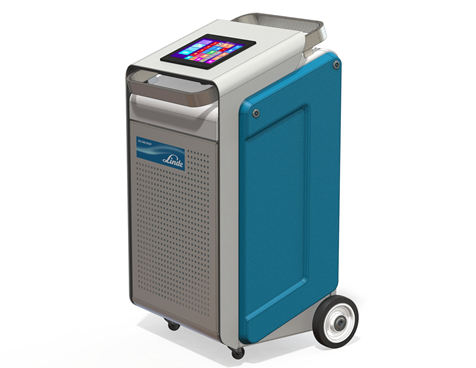Linde Gases introduces its new ADDvance™ O2 precision for analysis in metal additive manufacturing

Photo by Linde AG
Linde Gases, a division of The Linde Group, announced the launch of ADDvance™ O2 precision, the first-of-its-kind measuring and analysis unit which will enable metal additive manufacturers to analyse and control more precisely the level of oxygen (O2) and humidity within the printer chamber.
The new technology, developed in response to a need identified by aerospace company Airbus Group Innovations, can detect O2 levels up to 10 parts per million (ppm) within the printer chamber and then modify the gas atmosphere by adjusting the level of argon or nitrogen. The presence of too much oxygen or humidity can pose a challenge to additive manufacturers as it can negatively impact the quality and performance of the item being printed. In addition to ADDvance™ O2 precision allowing for more accurate levels of oxygen and humidity, it does so without cross-sensitivity effects and ensures a constant level of oxygen during the process.
The launch of ADDvance™ O2 precision comes on the back of Linde’s recent opening of a dedicated industrial gases laboratory for additive manufacturing in Unterschleissheim, near Munich, Germany. The focus of the laboratory is to research the effect of different atmospheric gases and gas mixtures on the different metal powders used in additive manufacturing in order to optimise the various layering processes. Reproducibility is one of the most important parameters for industries requiring strict consistency in end product, such as the aerospace and automotive industries. ADDvance™ O2 precision is an effective solution to improve reproducibility and through its new research facility Linde will continue to lead research into how oxygen and humidity impact the additive manufacturing process.
“Linde has always played a leading role in developing new technologies for our customers in order to improve the efficiency of their production processes and quality of output,” said Pierre Forêt, responsible for additive manufacturing R&D at Linde. “That Airbus Group Innovations selected Linde to work with them to overcome such a challenge in the pioneering area of additive manufacturing is testament to Linde’s technical competence and innovative spirit.”
The additive manufacturing process operates within a closed chamber filled with high purity inert gas such as argon or nitrogen. However, impurities due to incomplete purging, small machine leakages and metal powder can have an influence on the oxygen level. A variation in oxygen content in the chamber can result in differences in mechanical properties or chemical composition of the end product – for example a decrease in fatigue resistance.
For more information, please visit http://www.linde.de.
News Categories
- » NEWS HOME
- » Automation & Robotics
- » Industry 4.0
- » Material Handling
- » Sensors
- » Quality & Testing
- » Machine Vision
- » Laser & Optics
- » Metalworking
- » Motion Control & Drives
- » Hydraulics & Pneumatics
- » Process Industry
- » Renewable Energy
- » Agriculture
- » Home & Office Furniture
- » Environmental Tech









